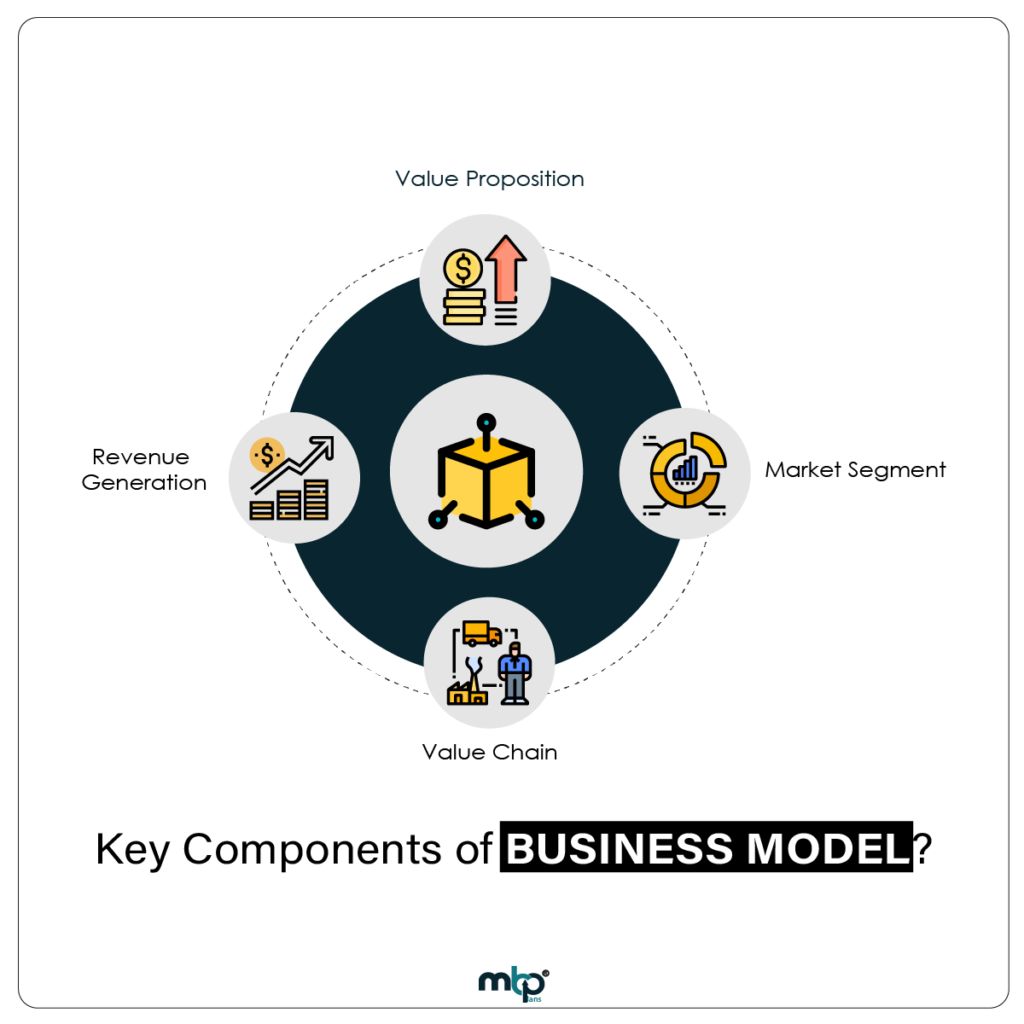The business model is basically a system of inputs (capital requirements), business activities (research, planning, designing), outputs (final product/service), and outcomes (profit, customer satisfaction) that aims to generate value over the short, medium, and long term.
Each of these elements holds several essential components, which helps the organizations to work more efficiently.

The components are as follows,
- Value Proposition: This component of the business model defines how the product or service is going to address the market/customer according to the customer’s needs and the value of the product from the customer’s perspective. The value proposition describes the mix of product, service, customer relations, and brand image unique to the company. Businesses can use the value proposition to not only target customers, but partners, employees, and suppliers. It helps the business to differentiate itself from a similar provider and to focus on providing core value for customers.
- Market Segment: The market segment describes what type of customers or what segment of the market the business will target. It easily segregates customers, audiences into groups that share similar characteristics such as demographics, interests, needs, or location. It can help companies get the most out of their marketing efforts, like it easier to keep customers engaged, and updated with time, product, and service.
- Value Chain: A value chain used to describe all the business activities or business process it takes to produce a product from start to finish. It basically refers to the overall life-cycle of a product, including design, production, distribution (i.e., inbound logistics, the operation, and outbound logistics). This component is useful for understanding the competitive advantages, value-creating activities, the linkages between activities which helps during the make-or-buy decisions that can result in either a cost advantage or differentiation strategy.
- Revenue Generation: It describes that the revenue earning strategy that business should pursue, like what to offer, how to price the product, and who can pay for the product or the target customer. In other words, it explains what product or service should create to generate revenues and how they should sell.
Above mentioned every component of the business model significantly increases the scope for innovation and improves the chances of building a sustainable competitive advantage, which leads to business growth.
